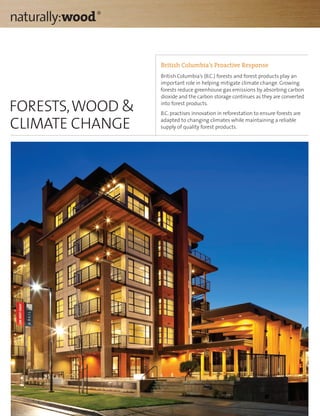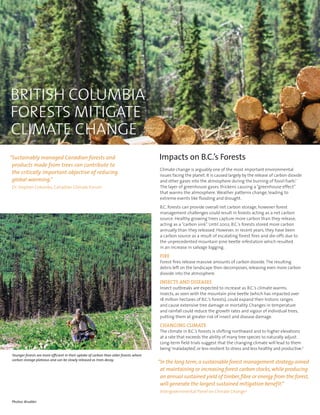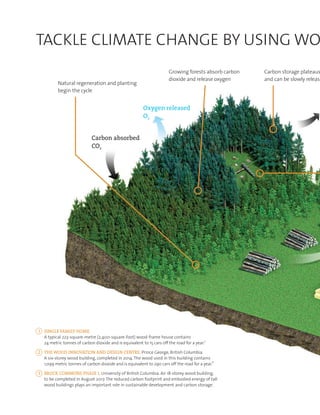British Columbia's forests play an important role in mitigating climate change by absorbing carbon dioxide during growth. B.C. practices sustainable forest management and innovation in reforestation to ensure forests continue to mitigate climate change through carbon storage in trees and wood products. Research is conducted to understand climate change impacts and adapt forest management, such as assisted migration of tree species to optimize growth under future conditions.





